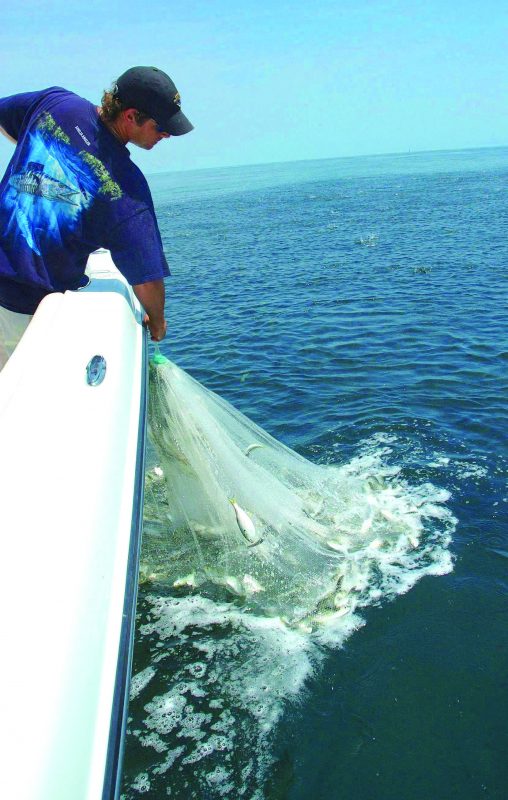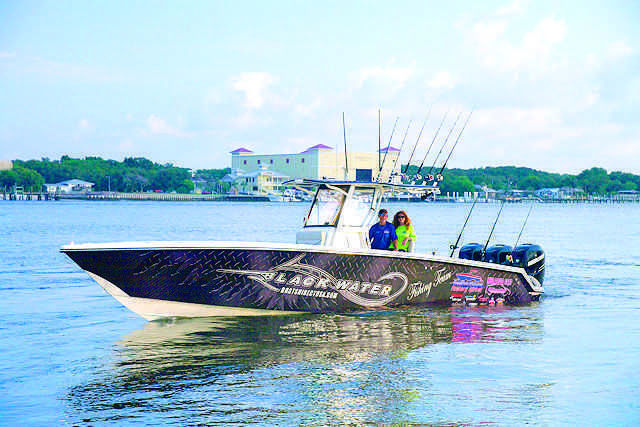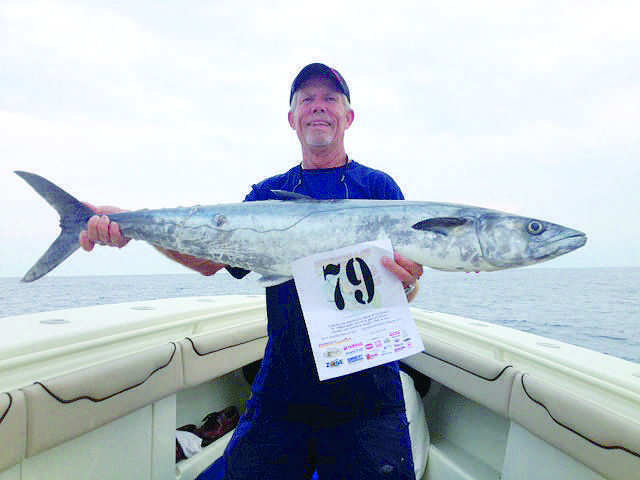
Clayton Kirby and team Vengeance are some of the first mackerel fishermen to develop several deadly live bait trolling techniques for kingfish. Kirby has captured two SKA Angler of the Year honors and has won the Greater Jacksonville Kingfish Tournament five times.
Keep in mind that the annual Greater Jacksonville Kingfish Tournament has in the past attracted a full field of 1,000 talented kingfish teams from all parts of the country. It is one of the most difficult fishing tournaments to win, and winning this event five times is an accomplishment only Clayton Kirby can lay claim to.
During 2013’s 33rd Jacksonville tournament, Kirby and team Vengeance proved their king mackerel fishing skills for the fifth time.
“When competing on the SKA tournament trail, our kingfish team employs a key kingfish tactic that we have used for many kingfish seasons now,” Kirby said. “Quite frankly, it involves a lot of hard work that most kingfish teams may easily pass aside because of the work and time involved.
“It’s critical to have on board plenty of fresh chum for grinding during a full day of king fishing and more importantly, large live menhaden caught in our nets are placed in the boat’s livewell for live baiting tournament-size kingfish. Our fishing team has had little success with frozen chum, it’s the freshly ground chum that interests king mackerel.”
Kirby throws a 10- to 12-foot fast-sinking cast net with a long rope in case menhaden are holding deep. Naturally, a larger fast-sinking net captures enough menhaden more efficiently than a smaller, slow sinking net.
“We will fill two 5-gallon buckets full of cast-netted menhaden, then ice down another 20 pounds of menhaden in an ice bag for chumming later in the day,” Kirby said. “Also, a lot of extra time is spent filling our livewells with 60 large live menhaden for live baiting kingfish.”
Team Vengeance has on board a hand-operated meat grinder that is put into action every five minutes during a long day of slow trolling live baits for kingfish. After grinding a few pounds of fresh menhaden, the chum is placed into a small mesh chum bag and attached to a gunnel cleat. Saltwater flowing through the chum bag allows fresh ground chum to slowly seep from the bag and saturate the upper portion of the water column where smoker kingfish live.
“The key to successfully chumming up tournament-size mackerel is hand grinding fresh menhaden on the boat with a hand-operated meat grinder every five minutes then placing the ground chum right in the chum bags,” Kirby said. “We also slow troll in the same area where tournament kingfish are more likely to be caught, which creates a huge chum slick in a relatively small area.
“I believe the majority of kingfish, particularly on the east coast, are found holding in the upper half of the water column, especially along the beaches and inlets,” Kirby said. “We seldom kingfish deeper than 10 feet of water. Downrigger baits are set from 5 to 7 feet of water even when fishing in deep water depths. The exception of course is Gulf coastal oil rigs, where kingfish are found holding in deep water. We also are also constantly making changes to our steering so live baits tend to swim down slowly or skitter on the surface in producing kingfish strikes.”
When fishing deep water, Kirby watches his boat’s electronics closely and adjusts his downrigger live baits to the exact depth where kingfish are holding. Kirby fishes large blue runners and goggle eye bait fish when targeting deep-water kingfish. His 2014 36-foot Blackwater tournament boat is plumbed perfectly for large and small live baits.

“My new Blackwater kingfish boat has 65-gallon and 45-gallon livewells located at the transom, which are plumbed to 2,000 GPH Rule livewell pumps,” Kirby said. “There is also a back-up 2,000 GPH Rule livewell pump for each livewell, which come on automatically if one fails. All four livewell pumps are located in a coffin in the bottom of the boat that eliminates those dreaded air locks.
“However, the big advantage while fishing from my new Blackwater is that both livewells are pressurized, which eliminates my live baits from becoming beat up. Now my expensive offshore live baits stay lively all day, which is extremely important when a major kingfish bite takes place late during a tournament day.”
During the 2014 SKA tournament trail, Kirby and team Vengeance will be competing with a brand new Mercury-powered, 36-foot Blackwater center-console fishing boat. Look for team Vengeance to dominate the king mackerel tournament trail during the 2014 fishing season.
What are some tactics you use for getting those Smoker Kings?
